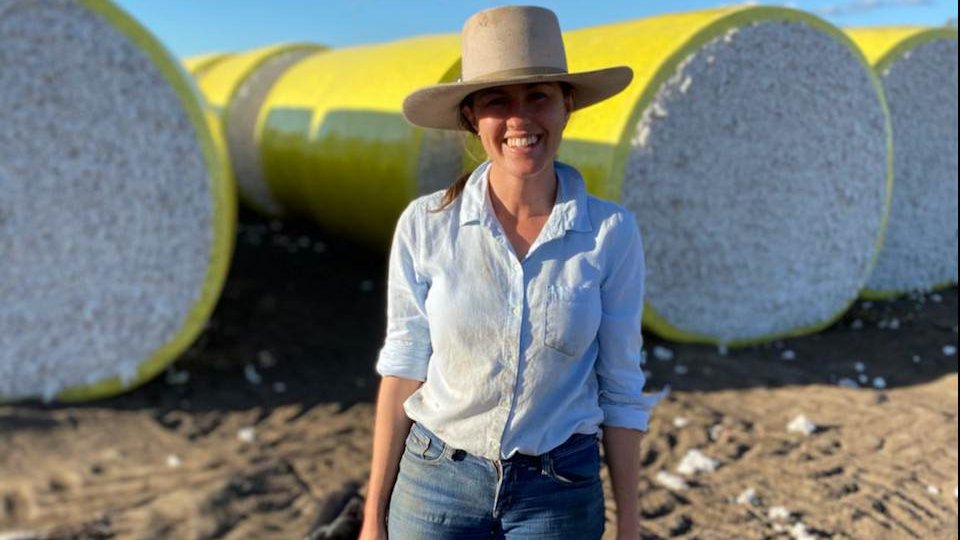By Jon Daly
Key points:
- Production is expected to reach more than four million bales next season thanks to recent rains
- Last year was one of the smallest national cotton crops on record
- The industry is still dealing with the loss of its biggest market, China
The national crop is already four times bigger this season and worth $1.5 billion.
Drought conditions in many growing regions have eased in the past 12 months, with heavy rains and flooding over recent months having set the industry on a path to produce one of its biggest crops next season.
"So, a good jump, but really only halfway there and certainly for next season we're anticipating four million bales and hopefully that goes higher," Cotton Australia chief executive Adam Kay said.
Industry expectations for next season's production doubled from two million to four million bales after widespread rainfall, according to Mr Kay.
At the same time, the industry is still dealing with the loss of its biggest market, China, due to frayed diplomacy.
(ABC Rural: Jon Daly)
Big season ahead
Production hit a 40-year-low of below 600,000 bales last year, and growers are this season picking as much as 2.8 million bales.
Stuart Armitage has recently begun harvesting his cotton crop at Cecil Plains near Toowoomba in southern Queensland.
After seven years of being declared drought, Mr Armitage said last year had been the toughest.
"We were running on empty last year, our income last year was pretty small and we had nothing in reserve," he said.
This season, his crop area has grown to 200 hectares and, after significant rains in March, his outlook for next season is looking even better.
"You'll see the Darling Downs has its biggest cotton year for quite a number of years and even Australia-wide it's going to be one of the biggest," Mr Armitage said.
(Bureau of Meteorology)
"It's going to be a big season around here. Most people you talk to are going to be increasing their acreage by 50 to 100 per cent and some could be 200 to 300 per cent. So next cotton season is going to be a big one."
Mr Kay said the biggest increases in production this season were near the Queensland-New South Wales border at St George and Dirranbandi.
"St George and Dirranbandi were near full capacity and yields have been exceptional out there and they're going to be producing a lot of the national crop," Mr Kay said.
On the other hand, he added, areas in Central Queensland largely missed out on significant rainfall during summer and were "still doing it tough".
(ABC Rural: Jon Daly)
Rush for new markets
The industry's resurgence has been overshadowed by the loss of its biggest market, China, which was once worth $800 million a year.
Because of political tensions, none of this season's cotton will be sold to China, so the industry is having to find new markets elsewhere.
Mr Kay said Chinese spinning mills had been warned off buying Australian cotton.
"They were contacted by Chinese government officials and told if they purchased Australian cotton they'd be penalised … in the form of not receiving tariff-free quota the next season. So it's a strong disincentive," he said.
As the industry gets ready for a production boom, there is an urgency to find new markets.
"(They're looking at) places like Vietnam, Bangladesh, Indonesia, Thailand, South Korea, and working really hard on getting that crop in there, trying to displace cotton (purchases) from our competitors like the US and Brazil."
Chinese buyers once offered Australian growers a premium for their cotton, Mr Kay noted, but global prices for cotton had stayed buoyant at about $550 a bale.
With production expected to reach 4 million bales, Mr Kay said the task of market diversion was urgent because supply had returned to pre-drought levels.


